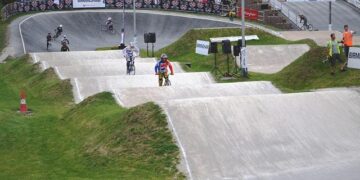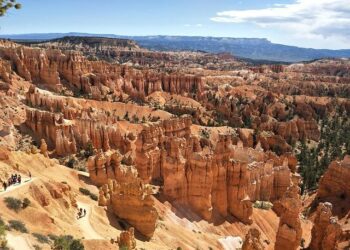A recent study published in Ecology by researcher James Laidre sheds new light on a hidden threat facing polar bears in the high Arctic: icing-related injuries. As climate change accelerates the formation of hazardous ice layers on sea ice surfaces, these iconic predators are increasingly vulnerable to cuts, abrasions, and other wounds that could impact their survival. This groundbreaking research highlights an emerging challenge for polar bears (Ursus maritimus) living at extreme latitudes, revealing how changing environmental conditions may be affecting their health and resilience in the rapidly shifting Arctic landscape.
Icing Hazards Threaten Polar Bear Survival in Extreme Arctic Conditions
Recent observations from Arctic field studies have uncovered a troubling increase in injuries among polar bears caused by severe icing conditions. As temperatures plummet and moisture rapidly freezes on their paws and fur, these majestic predators face mobility challenges that hinder their ability to hunt and navigate the uneven, frozen terrain. Ice accumulation not only leads to physical abrasions and cracks in the skin but also results in deeper wounds from slips and falls on increasingly brittle ice sheets.
Key findings from the study include:
- Roughly 30% of examined polar bears showed signs of ice-related injuries, ranging from minor cuts to deep lacerations.
- Injuries are most prevalent during late winter, coinciding with spikes in freezing rain and rapid temperature fluctuations.
- Severity of wounds correlates strongly with decreased hunting success and lowered body condition scores.
| Injury Type | Frequency (%) | Impacts on Behavior |
|---|---|---|
| Paw abrasions | 45 | Reduced walking efficiency |
| Ice lacerations | 30 | Impaired hunting ability |
| Deep cuts | 15 | Higher infection risk |
| Ice balls on fur | 10 | Increased heat loss |
Uncovering Patterns and Causes of Frost-Related Injuries Among High Latitude Polar Bears
Recent observations reveal a significant correlation between extreme frost events and the frequency of physical injuries sustained by polar bears in the Arctic circle. Researchers have identified that the relentless combination of subzero temperatures and abrasive ice formations lead to a variety of wounds, including lacerations, frostbite, and joint damage. This discovery challenges previous assumptions that primarily attributed injuries to intraspecies conflicts or hunting mishaps. Instead, environmental factors-specifically, the presence of thick frost layers and sharp ice crystals-are now recognized as primary contributors to these icing-related traumas.
Key environmental stressors identified include:
- Persistent ice build-up on paw pads causing reduced mobility
- Wind-driven ice shards that increase skin abrasions
- Extended exposure to freezing temperatures exacerbating tissue damage
| Injury Type | Frequency (%) | Average Recovery Time |
|---|---|---|
| Lacerations | 42 | 3 weeks |
| Frostbite | 35 | 4 weeks |
| Joint Injuries | 23 | 6 weeks |
Understanding these patterns is crucial for predicting population health trends under worsening climate conditions. The findings emphasize the urgent need for targeted conservation strategies that account for the mechanical and physiological impacts of Arctic icing, rather than focusing solely on behavioral or ecological factors. This shift in perspective opens new avenues for protecting vulnerable polar bear populations at high latitudes, where frost exposure is intensifying due to changing weather patterns.
Experts Call for Targeted Conservation Efforts to Mitigate Ice-Related Risks on Polar Bear Populations
Recent studies have shed light on the increasing prevalence of ice-related injuries among polar bear populations in the Arctic’s highest latitudes. Experts emphasize that these injuries, often resulting from unstable or thinning sea ice, pose a significant threat to the bears’ survival, affecting their mobility, hunting efficiency, and ultimately, reproductive success. Researchers advocate for targeted conservation strategies tailored to the dynamic and fragile ice conditions, underscoring the need to integrate climate adaptation measures with traditional wildlife protection protocols.
Key recommendations include:
- Enhanced ice monitoring: Utilizing satellite technology to track hazardous ice formations that increase injury risks.
- Protected migration corridors: Establishing zones where bears can safely traverse without encountering dangerous ice.
- Community engagement: Collaborating with Indigenous peoples for real-time observations and mitigation actions.
| Risk Factor | Impact Level | Conservation Priority |
|---|---|---|
| Thin ice patches | High | Urgent |
| Jagged ice fractures | Medium | Moderate |
| Ice melt timing shifts | High | Urgent |
In Summary
As climate change continues to reshape the Arctic landscape, the new findings from Laidre’s 2024 study shed critical light on an often-overlooked threat to polar bears: icing-related injuries. These physical impacts not only exacerbate the challenges faced by this iconic species but also underscore the intricate ways in which environmental shifts affect animal health and survival. Monitoring such emerging risks is essential for informing conservation strategies aimed at protecting polar bears in their rapidly changing high-latitude habitats. As the Arctic warms, the urgency to understand and mitigate these icing-related dangers grows ever more pressing.































